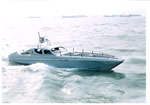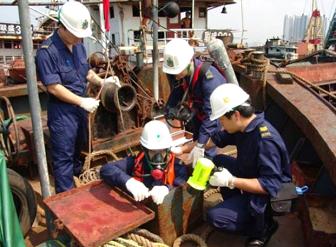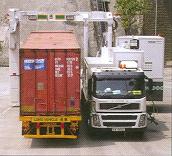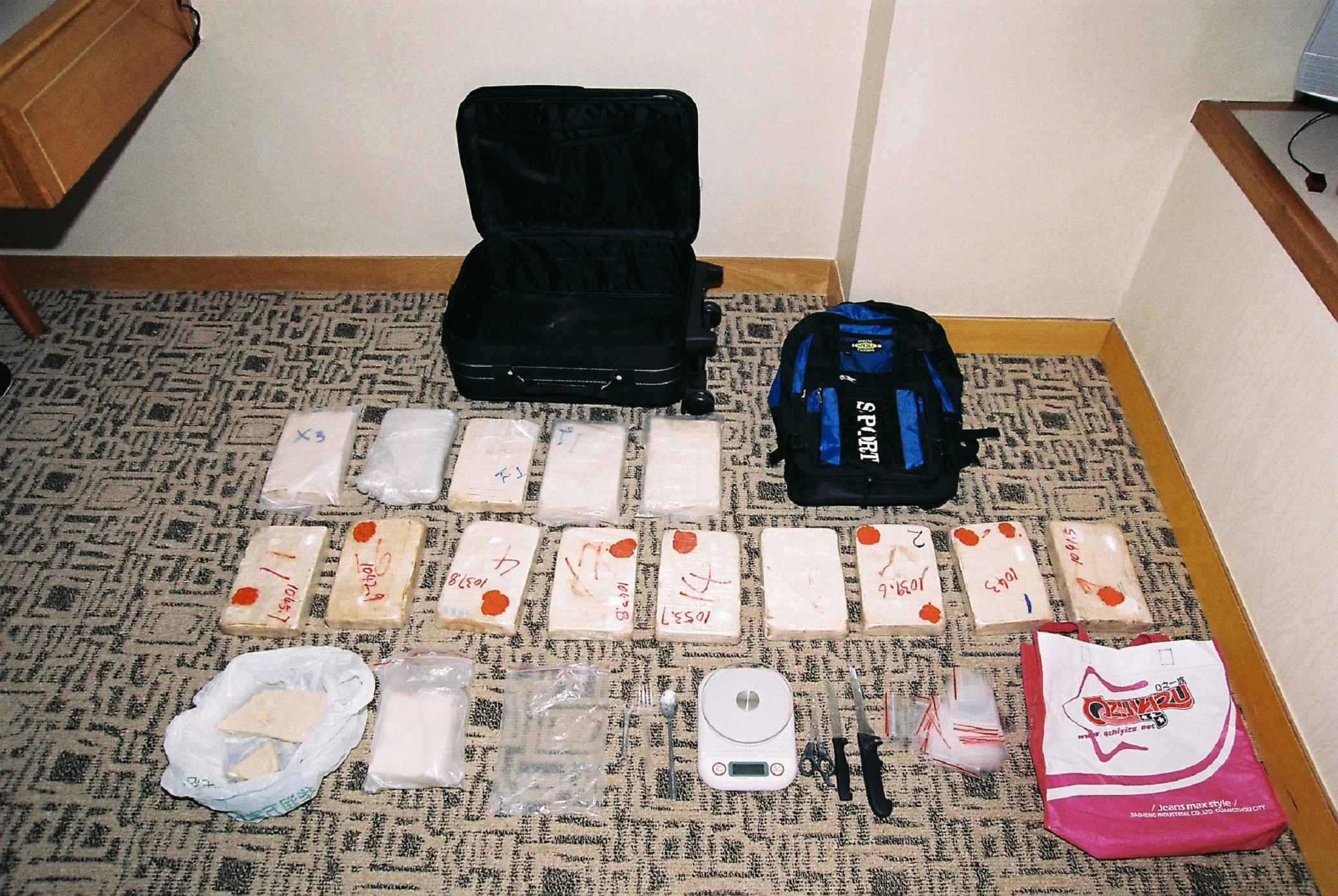The Hong Kong Special Administrative Region (HKSAR) and authorities of different regions (including the Mainland)have all along taken sustained actions against smuggling. The HKSAR Government has adopted the following strategies -
(a) Tough anti-smuggling legislation
 There is adequate legislative backing for Customs and Excise Department to combat different types of smuggling activities. Major enforcement powers for the Customs officers are vested in the Import and Export Ordinance (Chapter 60). Other empowering ordinances include the Dutiable Commodities Ordinance (Chapter 109), Dangerous Drugs Ordinance (Chapter 134), Control of Chemicals Ordinance (Chapter 145), Firearms and Ammunition Ordinance (Chapter 238), Trade Descriptions Ordinance (Chapter 362), Organized and Serious Crimes Ordinance (Chapter 455) and Copyright Ordinance (Chapter 528), etc. The maximum penalty for conviction on indictment of the most serious smuggling offence is life imprisonment and an unlimited fine.
There is adequate legislative backing for Customs and Excise Department to combat different types of smuggling activities. Major enforcement powers for the Customs officers are vested in the Import and Export Ordinance (Chapter 60). Other empowering ordinances include the Dutiable Commodities Ordinance (Chapter 109), Dangerous Drugs Ordinance (Chapter 134), Control of Chemicals Ordinance (Chapter 145), Firearms and Ammunition Ordinance (Chapter 238), Trade Descriptions Ordinance (Chapter 362), Organized and Serious Crimes Ordinance (Chapter 455) and Copyright Ordinance (Chapter 528), etc. The maximum penalty for conviction on indictment of the most serious smuggling offence is life imprisonment and an unlimited fine.
In 2009, the Government amended the Import and Export Ordinance to target smuggling activities by speedboat. Under the new provisions, the total power of the engines of a vessel that could be presumed with reasonable suspicion to have been used for the purpose of smuggling is reduced to one or more engines with the total power of which could exceed 225 horsepower.
(b) Intelligence-led customs operations
An Intelligence Bureau was established in July 2002 to strengthen intelligence collection, exchange and analysis. This has enhanced targeting and interception accuracy.
(c) Increased enforcement operations
Dedicated task forces have been set up by the Customs and Excise Department to curb smuggling.
 For the Customs and Excise Department, the Revenue and General Investigation Bureau was established in February 2003, which has an Illicit Cigarette Investigation Division (formerly known as Anti-Illicit-Cigarette Investigation Division) aiming at combating illicit cigarette activities, and an Illicit Fuel and General Investigation Division (formerly known as Anti-Illicit-Fuel Investigation Division) aiming at stepping up enforcement action against illicit fuel activities. The Intellectual Property Investigation Bureau has also been set up and tasked to fight against infringement of intellectual property rights. Since January 2013, the Syndicate Crimes Investigation Bureau was formed to conduct investigation into syndicate crimes under Customs' purview and to co-ordinate anti-smuggling efforts on all fronts.
For the Customs and Excise Department, the Revenue and General Investigation Bureau was established in February 2003, which has an Illicit Cigarette Investigation Division (formerly known as Anti-Illicit-Cigarette Investigation Division) aiming at combating illicit cigarette activities, and an Illicit Fuel and General Investigation Division (formerly known as Anti-Illicit-Fuel Investigation Division) aiming at stepping up enforcement action against illicit fuel activities. The Intellectual Property Investigation Bureau has also been set up and tasked to fight against infringement of intellectual property rights. Since January 2013, the Syndicate Crimes Investigation Bureau was formed to conduct investigation into syndicate crimes under Customs' purview and to co-ordinate anti-smuggling efforts on all fronts.
As for the Hong Kong Police Force, a Small Boat Division (SBDIV) was established in March 2003. One of its roles is combating smuggling by speedboats. The Marine Police of the Hong Kong Police Force have continued to adopt a multi-agency approach to target syndicated smuggling activities by high-speed craft, which over the years has resulted in significant seizures of contraband, vehicles and vessels involved in smuggling activities.
(d) Procurement of High-tech equipment for anti-smuggling
To strengthen cargo examination and enhance the efficiency of Customs clearance, the Customs and Excise Department has procured the mobile X-ray scanning system and Vehicle X-ray Inspection System to enhance contraband detection capacity. The Department also upgraded some of the mobile X-ray scanning systems and Vehicle X-ray Inspection Systems with radioactive substance detection capabilities.
(e) Enhanced co-operation with the tobacco and pharmaceutical and copyright industries
The Customs and Excise Department co-operates closely with the industries in the fight against illicit cigarette and pirated and counterfeit goods. Reward schemes, funded by the pharmaceutical and copyright industries, and administered by the Customs, have been set up to encourage members of the public to provide information to help the Department to tackle the problems of counterfeit or trade mark infringing pharmaceutical products, pirated optical discs, equipment used for the production of pirated optical discs, and infringing copies of copyright works being illegally photocopied, distributed or used in business. Members of the public may provide information through the Customs Hotline (2545 6182).
(f) Increased liaison with the Mainland authorities and in neighbouring areas
There is enhanced liaison with the Mainland authorities and the customs authorities in neighbouring areas to share information and intelligence. Apart from regular liaison meetings, parallel operations have been mounted both in Hong Kong and in the Mainland. The Customs and Excise Department has signed a Customs Co-operative Arrangement (CCA) with the General Administration of China Customs, providing a framework for both administrations to cooperate in the fight against smuggling and illicit trafficking of dangerous drugs, the protection of intellectual property rights, and the exchange of enforcement experience and training. At present, the Department have signed CCA with 22 customs administrations.
(g) One-Stop Information Hotline
The Customs and Excise Department has a central one-stop information hotline (2545 6182) for members of the public to report various customs offences.
(h) Rewards for information
To encourage the public to report smuggling, the Government offers rewards on information leading to the successful seizure of smuggled goods. Members of the public may provide information through the Customs Hotline (2545 6182).
The HKSAR Government is committed to combating all drug smuggling activities. The Customs and Excise Department plays an important role in drug detection by conducting customs clearance on inbound and outbound passengers, cargoes, postal articles and their conveyance tools at the port, the River Trade Terminal, the Kwai Chung Container Terminal, the Hong Kong-Macau Ferry Terminal, the China Ferry Terminal, the Kai Tak Cruise Terminal, the Through Train Terminal, the land-boundary control points and the Airport. For raising the efficiency of drug detection and customs clearance, the Customs drug detector dogs are deployed to assist in customs clearance at various control points.

Apart from regular Customs clearance at the control points, the Customs and Excise Department has a dedicated Customs Drug Investigation Bureau (CDIB) to render support in the suppression of drug trafficking. CDIB officers mount surveillance on drug trafficking syndicates for planning enforcement actions and provide intelligence to the frontline officers to take enforcement action at the control points.
Specifically, the Airport Investigation Group of CDIB mounts covert observation on incoming/transit/outgoing passengers for combating drug trafficking activities at the Airport. In addition, the Group is also responsible for conducting follow-up investigations into drug cases effected by the uniformed officers of the Airport Command. The Joint Intelligence Unit, formed by officers of the CDIB and the Police Narcotics Bureau in 1979, facilitates the sharing of drug intelligence between the two Departments and co-ordinates joint anti-narcotics operations at the Airport.

Meanwhile, the Customs and Excise Department maintains a close working relationship with the Mainland and overseas drug enforcement agencies through intelligence exchange and joint operations to combat transnational drug trafficking activities.

|
2011 |
2012 |
2013 |
2014 |
2015 |
|
|---|---|---|---|---|---|
| Narcotics Analgesics | |||||
| Heroin | 140.83 kg | 68.96 kg | 53.94 kg | 39.6 kg | 10.78 kg |
Hallucinogens |
|||||
| Cannabis | 35.17 kg | 17.43 kg | 48.58 kg | 66.93 kg | 71.95 kg |
| Ketamine | 75.71 kg | 496.17 kg | 47.58 kg | 126.48 kg | 272.07 kg |
Stimulants |
|||||
| Cocaine | 30.05 kg | 602.58 kg | 173.87 kg | 103.94 kg | 228.33 kg |
| MDMA (Ecstasy) | 2 tab | 63 tab | 273 tab | 0 tab | 14 tab |
| - | - | 0.49 kg | 0.22 kg | 2.39 kg | |
| Methamphetamine (Ice) | 31.19 kg | 35.91 kg | 83.39 kg | 416.32 kg | 274.97 kg |
Tranquillizers |
|||||
| Alprazolam | 590 tab | 1 750 tab | 930 tab | 20 597 tab | 4 905 tab |
| - | - | - | 17.96 kg | 6.81 kg | |
| Diazepam | 651 tab | 35 tab | 714 tab | 36 676 tab | 40 057 tab |
| - | - | - | 11.31 kg | 11.70 kg | |
| Nimetazepam (Erimin 5) | 70 814 tab | 4 217 tab | 107 515 tab | 300 tab | 29 076 tab |
| - | 9.99 kg | - | 0.53 kg | - |
Tab = tablets
"-" = less than 0.005kg
"Psychotropic drugs" usually refer to all of the above drugs except Narcotics Analgesics

